#Lead Generation service for travel industry
Text
Lead Generation service for mortgage industry https://leadsforever.org/

#b2b lead generation service#lead generation servic for real estate#lead generation service for education industry#Lead Generation service for mortgage industry#Lead Generation service for travel industry#Lead Generation service for banking and Finance
2 notes
·
View notes
Text
Digital Marketing for Logistics
#Digital Marketing for Logistics#seotechexperts#digital marketing for travel industry#ecommerce#seo services#lead generator#education industry#industry#digitalmarketingservices#digital marketing
0 notes
Text
Astrology Notes: What Binds Opposite Signs Together

Hi everyone! I haven't been here for a while, so it's good to be back again.
Little announcement: visit my site for Tarot and Astrology readings with a 25% off throughout November!
Here's a little piece on general knowledge about the 12 signs as a way to understand them better without having to memorize all their specific qualities... you can think of this as having 6 coins, each sign describing one side and its counterpart the other.
Aries-Libra (axis of the self and others): both seek reassurance and worth through people and they are good at making things happen (these are Cardinal signs). Aries wants to lead, conquer and be recognized, while Libra wants to connect, harmonize and be cherished. Both need people to feel fulfilled, and both are equally entrepreneurial even though one engages from instinct and embodies the active principle, and the other engages from the brain and embodies the receptive principle to achieve their goals.
Taurus-Scorpio (axis of value and power): both seek power, are very sensual (and sexual), private and deep, even if one is not aware at first impression. They are quite relentless and stubborn in their ways because of their Fixed modality. Taurus seeks respect, comfort and safety in his own ability to make money and from physical pleasure, while Scorpio uses emotional depth, sexuality, other people's resources and spiritual transformation to achieve the same. Both can be pretty obsessive, greedy, vindictive, hedonistic and visceral if unevolved.
Gemini-Sagittarius (axis of the mind and information): both are adaptable, love learning and teaching, and they are inspired by knowledge and movement. Gemini needs stimulation from their close surroundings and feels transcendence from drilling down information and from their ability to network, while Sagittarius likes to look at the big picture and uses his insights to pursue his own truth. Both see travel, information and interactions as highly valuable, but can be a bit fickle and non-committal because of their need to be constantly on the move.
Cancer-Capricorn (axis of family and patrimony): both are highly dependable, trustworthy and traditional. They value stability, family and lasting relationships, even if they have only a few. Cancer focuses on protection, emotional depth and nurturing to feel fulfilled (female archetype) and Capricorn feels safe through structure, provision and industriousness (male archetype). Both have excellent financial, organizational and managerial skills, and are quite proactive when they are invested in something. Both are sensitive but dislike appearing vulnerable... emotions can be their undoing.
Leo-Aquarius (axis of entertainment and society): both signs are inventive and find a sense of meaning through creativity and uniqueness. None of them like to follow, as they feel entitled to (and proud of) their authenticity and own mindset. Leo loves the expression of its spirit and desires admiration as a form as validation, while Aquarius seeks for righteousness and belonging through the appraisal of its mind. Both communicate what's inside in brilliant ways but can be quite headstrong and proud at times.
Virgo-Pisces (axis of service and wellness): both are humble, modest, gentle and adore being of service and utility. Since they sit in the axis of health, both are healers, although Virgo does it through his brainpower and dexterity, while Pisces from a spiritual, imaginative and intuitive place. Both are selfless and subservient, and because of this, they can suffer from abuse or mistreatment often than other signs, but one of their greatest assets is their ability to help and empower others through service.
That's all! Hope this is helpful 🥰
Written by @soberpluto
#astrology#astrology community#astrology notes#astrology observations#astro observations#astro community#astrology signs#12 signs#aries#taurus#gemini#cancer#leo#virgo#libra#scorpio#sagittarius#capricorn#aquarius#psices#opposite signs
138 notes
·
View notes
Text
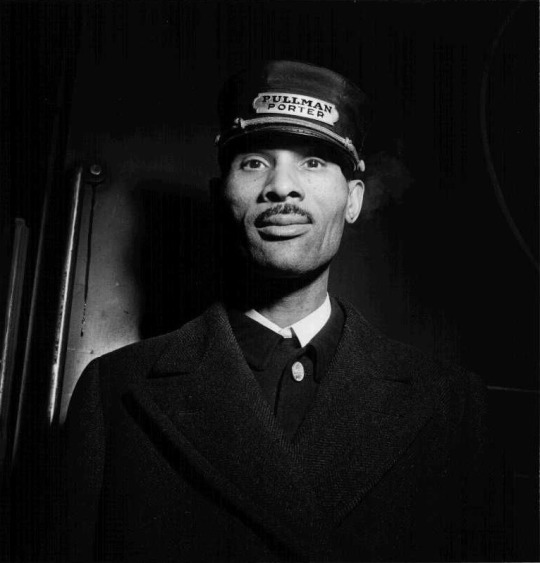
Today We Celebrate Labor Day
The Pullman neighborhood on Chicago’s South Side is a small community that changed the country.
Pullman is central to understanding industry, labor and civil rights in America and the tense conflicts that led to the creation of Labor Day and the first African American union.
When George Pullman, the industrial titan, who created an empire building and servicing train cars that felt like hotels on wheels, dismissed the requests for arbitration, Jennie Curtis, president of The Girls Local Union 269 & seamstress in the repair shops, along with the exasperated workers decided to walk off the job. Their strike was relatively small, but it came shortly before a national American Railway Union (ARU) convention hosted in Chicago. At the ARU convention, members considered whether to throw their national weight behind the Pullman workers.
The ARU did come along, though. Eight days later, with Pullman’s heels still firmly planted, 125,000 workers on 29 railways refused to move trains that included Pullman cars. Train travel throughout much of the country ground to a halt.
The strike came at a heavy price. Despite the best efforts of ARU President Eugene Debs to maintain calm, workers, law enforcement and rail management went toe-to-toe over who controlled the railways around the country, leading to significant violence. When angry strike supporters set fire to a railcar full of U.S. mail, President Grover Cleveland and his attorney general, who had previously worked for railway owners, used the incident to criminalize efforts by the union leaders and sent federal troops to Chicago to crush the strike.
Crushing the strike deeply undercut Pullman’s reputation as a visionary and threatened political support for Cleveland. The president was the leader of the Democratic party, which had strong labor support. Just as Cleveland was coming down hard on the side of management, he signed legislation that would make Labor Day a national holiday.
CARTER™️ Magazine carter-mag.com #wherehistoryandhiphopmeet #historyandhiphop365 #cartermagazine #laborday #blackhistorymonth #staywoke #blackhistory #carter #history
#carter magazine#carter#historyandhiphop365#wherehistoryandhiphopmeet#history#cartermagazine#today in history#staywoke#blackhistory#blackhistorymonth
52 notes
·
View notes
Text
New Renaissance: Gerudo & Zora

The NeoGerudo/NomadicGerudo are made up predominantly of the younger Gerudo generation, and live either in the extended Gerudo Town (AKA the deserts center of entertainment) or travel in "spiritual" communes as nomads.
Extended Greudo Town lies primarily on the outside of the original towns walls - which allows for a technical loophole in the "no voe" law. These Gerudo are highly self-indulgent, and have pioneered Hyrules motion-picture industry with the use of projector technology. Additionally, many have openly embraced a less "traditional" identity in gender & orientation. (although, still no male-identifying Gerudo...that we know of).
Nomadic Gerudo share art, information, services, and trade materials to travelers in the desert or Greater Hyrule.
[The Head of their radio station is an actress named Tirax'ana]
The Pirate Zora are Zora who have settled in the eastern coast and seas of Hyrule.
The "capital" of this sub-group is known as Covencove, located on the coast on the northeast of Hyrule. The architecture is built with wood and rustic metal, which still somewhat retains aesthetics from Zora's Domain.
Pirate Zora have mainly advanced musical arts...as well as weaponary, in the form of "shots" (AKA water pistols; a new weapon type). They also have a pleasent love of brawling against oppenents in ocean arenas.
[The Head of their radio station is named Captain Lohtide]
In a side adventure, Link can help the two groups in a business arrangement, where they collaborate on a motion picture. This film would profit an ungodly sum of rupees, and lead them to a 10-year contract.
#zelda#zelda fandom#the legend of zelda rise of the titans#legend of zelda#loz#zora#zora oc#gerudo#gerudo oc#timeskip au
8 notes
·
View notes
Text
Meghan, The Duchess of Sussex is a feminist, champion of human rights and gender equity, and global role model. Her lifelong advocacy for women and girls remains a constant thread she weaves through both humanitarian and business ventures. She is noted as one of the most powerful and influential women in the world, topping lists such as TIME Magazine’s Most Influential People, The Financial Times’ 25 Most Influential Women, Variety Power of Women, and British Vogue’s Vogue 25.
She and her husband, Prince Harry have also been the recipients of the NAACP President’s Award as well as the Robert F. Kennedy Ripple of Hope Award. Meghan’s global impact, and strong stance on resilience, equality, and compassion through action, have made her one of the most iconic public figures of this generation.
Born and raised in Southern California, Meghan attended Los Angeles based all-girls Catholic School, Immaculate Heart, which she continues to support as an alumna, before moving to Chicago to attend the prestigious Northwestern University. While there, she double majored in Theater and International Relations, and went on to intern at the US Embassy in Buenos Aires, Argentina, as well as to study abroad in Madrid, Spain. After graduation, Meghan turned her focus to the entertainment industry, landing her big break as a lead actor on the hit series, ‘Suits’ which she starred in for seven seasons. During her time off between filming, Meghan travelled to Rwanda, India, and across the globe working on humanitarian missions, and serving in key roles such as: UN Women’s Advocate for Women’s Political Participation and Leadership, a World Vision Global Ambassador, and a leading Counsellor to One Young World, where she inspired youth and women around the world through her passionate advocacy and hands-on approach to being of service. She also travelled to support the military community on a USO Tour, visiting six military bases in seven days including Bagram, Afghanistan.
In 2018, Meghan married Prince Harry, becoming The Duchess of Sussex.
An accomplished writer, she has contributed pieces to publications in the UK, US, and Ireland, and parlayed that skill into the creation of the successful lifestyle website, ‘The Tig’, where her thoughtful and inspiring op-eds cultivated a global fanbase. The Duchess of Sussex was the first guest editor in the history of British Vogue for their July Issue in 2019, which was the fastest selling copy in the history of the publication.
She and Prince Harry founded The Archewell Foundation in 2020 to support communities in need at a micro and macro level, in both moments of crisis as well as for long term aid. At The Archewell Foundation, they hold the value that charitable work should not simply be ‘a handout, but rather a hand held’, a phrase which Meghan first coined when supporting UK charity Smart Works, of which she is patron, that uplifts and prepares underserved women to enter the workforce. Meghan and her husband also founded and oversee production company, Archewell Productions and podcasting arm, Archewell Audio.
In 2022, Meghan launched ‘Archetypes’, a record-breaking podcast exploring the labels that try to hold women back; ‘Archetypes’ debuted at Number 1 in The US, UK, Australia, Ireland, and New Zealand, and topped the charts as the Number 1 podcast in 47 countries, demonstrating her unparalleled global reach. After its first season, Archetypes was awarded was awarded The People’s Choice Award in the podcast category.
She is a NY Times Best Selling author, publishing her highly celebrated children’s book, ‘The Bench’, and “Together: Our Community Kitchen” a publication she spearheaded with the women of the Hubb Community Kitchen in the UK, who were displaced after the tragic Grenfell Fire. True to her character, The Duchess of Sussex mobilized to turn pain into purpose, working alongside this dynamic group of women to help them heal, grow, and develop their own business enterprises in the face of adversity. In addition to topping the NY Times Bestsellers list, “Together,” also debuted as number one on the UK’s Sunday Booklist, with proceeds going to the Kitchen.
Meghan’s influence in fashion has been coined “The Meghan Effect” with items selling out within hours of her wearing them. Her ‘effect’ has transcended fashion, shifting cultural conversations as seen with her op-ed for the NY Times “The Losses We Share.” The piece detailed a heartbreaking personal loss which spiked the conversation surrounding miscarriage to the highest it had been spoken of in over two decades at the time of publishing.
Meghan is a passionate advocate for mental health and family care, the holistic support of women and children’s rights, and the immeasurable value of one’s self worth. Her core belief that representation matters, and her connection to community through the lens of learning, healing, and inspiring have helped define her as a cultural catalyst for positive change.
Meghan resides in California with her husband and their children Prince Archie Harrison and Princess Lilibet Diana, and their three dogs.
34 notes
·
View notes
Text

"Don't hate the player, hate the game." Maybe we should hate both. There's padding a resume but then there's a work of fiction which is what Meghan Markle is determined to pass off as her professional bio. Grab your sick bucket🤢 before examining more proof that this vile woman can't tell THE TRUTH even if her life depends on it. There simply aren't enough pinocchios in the world to highlight these lies.
🤥"Accomplished writer"
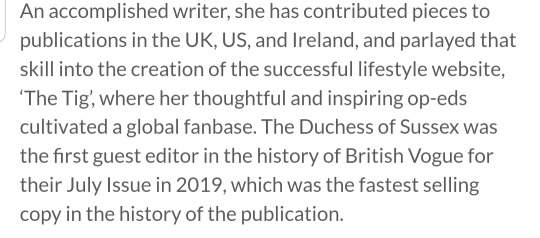
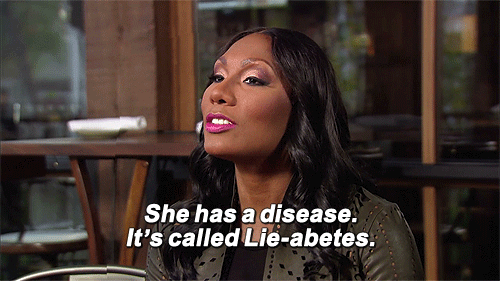
🤥Fashion "The Meghan Effect causes items to sell out." (She had the nerve to include the op-ed she purchased for the mythcarriage) "spiked conversation surrounding miscarriage to the 🤥highest it had been spoken of in over two decades at the time of publishing🤦♀️🤦♂️."


🤥Highly celebrated children's book
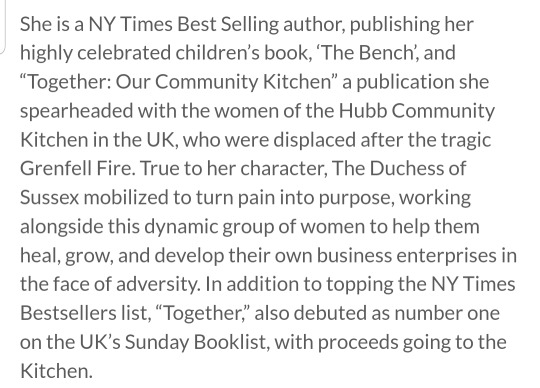

Meghan, The Duchess of Sussex, Keynote Speaker | Harry Walker Agency
Meghan, The Duchess of Sussex is a 🤥feminist🤥, champion of 🤥human rights and gender equity, and global🤥 role model. Her lifelong🤥 advocacy for women and girls remains a constant thread she weaves through both humanitarian 🤥and business ventures. She is noted as one of the most 🤥powerful and influential women in the world, topping lists such as TIME Magazine’s Most Influential People, The Financial Times’ 25 Most Influential Women, Variety Power of Women, and British Vogue’s Vogue 25🤥.
This is just gross. A global role model🤢 one of the most iconic figures of this generation 🤢🤢🤢
She and her husband, Prince Harry have also been the recipients of the NAACP President’s Award as well as the Robert F. Kennedy Ripple of Hope Award. Meghan’s global impact🤥, and strong stance on resilience, equality, and compassion🤥 through action, have made her one of the most iconic 🤥public figures of this generation.

Born and raised in Southern California, Meghan attended Los Angeles based all-girls Catholic School, Immaculate Heart, which she continues to support as an alumna, 🤥before moving to Chicago to attend the 🤥prestigious Northwestern University. While there, she 🤥double majored in Theater and International Relations, and went on to 🤥intern at the US Embassy in Buenos Aires, Argentina, as well as to study abroad in Madrid, Spain. After graduation, Meghan turned her focus to the entertainment industry, landing her big break as a 🤥lead actor on the hit series, ‘Suits’ which she starred in for seven seasons. During her time off🤥 between filming, Meghan travelled to Rwanda, India, and across the globe 🤥working on humanitarian missions, and serving in 🤥key roles such as: UN Women’s Advocate for Women’s Political Participation and Leadership, a World Vision Global Ambassador, and a leading Counsellor to One Young World, where she inspired 🤥youth and women around the world through her passionate advocacy and 🤥hands-on approach to being of service. She also travelled to support the military community on a USO Tour, visiting six military bases in seven days including Bagram, Afghanistan.
In 2018, Meghan married Prince Harry, becoming The Duchess of Sussex.
🤥An accomplished writer, she has contributed pieces to publications (tabloids🙄) in the UK, US, and Ireland, and parlayed that skill into the creation of the successful lifestyle website, ‘The Tig’, where her thoughtful and🤥 inspiring op-eds cultivated a😂 global fanbase. The Duchess of Sussex was the first guest editor in the history of British Vogue for their July Issue in 2019, which was the fastest selling copy in the history of the publication.
She and Prince Harry founded The Archewell Foundation in 2020 to support communities in need at a micro and macro level, in both moments of crisis as well as for long term aid. At The Archewell Foundation, they hold the value that charitable work should not simply be ‘a handout, but rather a hand held’, 🤥a phrase which Meghan first coined when supporting UK charity Smart Works, of which she is patron, that uplifts and prepares underserved women to enter the workforce. Meghan and her husband also founded and oversee production company, Archewell Productions and podcasting arm, Archewell Audio.
In 2022, Meghan launched ‘Archetypes’, 🤥a record-breaking podcast exploring the labels that try to hold women back; ‘Archetypes’ debuted at Number 1 in The US, UK, Australia, Ireland, and New Zealand, and topped the charts as the Number 1 podcast in 47 countries, demonstrating her 😂🤥unparalleled global reach. After its first season, Archetypes was awarded The People’s Choice Award in the podcast category😂.
She is a 🤥NY Times Best Selling author, publishing her highly celebrated children’s book, ‘The Bench’, and “Together: Our Community Kitchen” a publication she spearheaded with the women of the Hubb Community Kitchen in the UK, who were displaced after the tragic Grenfell Fire. True to her character, The Duchess of Sussex mobilized to turn pain into purpose🤢, working alongside🤥 this dynamic group of women to help them heal, grow, and develop their own business enterprises in the face of adversity. In addition to 🤥topping the NY Times Bestsellers list, “Together,” also debuted as number one on the UK’s Sunday Booklist, with proceeds going to the Kitchen.
Meghan’s influence in fashion has been coined🤥 “The Meghan Effect” with items selling out within hours of her wearing them. 🤥Her ‘effect’ has transcended fashion, 🤥shifting cultural conversations as seen with her op-ed for the NY Times “The Losses We Share.🤥🤥🤥🤥🤥” The piece detailed a heartbreaking personal loss 🤥🤥🤥🤥🤥which spiked the conversation surrounding miscarriage to 🤥the highest it had been spoken of in over two decades at the time of publishing🤥🤥🤥🤥🤥.
Meghan is a 🤥passionate advocate for mental health 🤥🤥🤥🤥🤥and family care🤥🤥🤥🤥, the holistic support of women and children’s rights🤥, and the immeasurable value of one’s self worth🤥. Her core belief that representation matters🤪, and her connection to community through the lens of learning🤥, healing🤥, and inspiring🤥 have helped define her as a 🤥cultural catalyst for 🤥positive change.
Look at how dumb the kids names look with titles🤡🤦♂️🤦♀️ They sound like cartoon characters.

Meghan resides in California with her husband and their children Prince Archie Harrison and Princess Lilibet Diana, and their three dogs.
Someone told her this is her "Beyonce" photo. Most likely it was Thirsty Tyler Perry 😂🤦♀️🤦♂️

#megxit#strip the titles#meghan markle is a liar#revenge#fraudess#fraudsters#i was such a fraud#walmart wallis#disgusting
31 notes
·
View notes
Text
Palestinian mission in Brazil seeks direct trade
A delegation of 11 Palestinian companies had appointments in São Paulo this Monday (15) with a meeting at the Arab Brazilian Chamber headquarters. The group wants direct tourism and business without passing through Israel.

A mission of Palestinian businesspeople in Brazil aims to make trade and tourism business between the two countries more direct. The group started its activities in São Paulo this Monday (15), with a meeting at the headquarters of the Arab Brazilian Chamber of Commerce (ABCC), and will stay until Friday (19), concurrently with the period of the APAS supermarket Show, which the delegation will visit.
Palestine trades with Brazil, but most of the flow passes through Israel. The same happens in tourism. Palestine receives Brazilian visitors, but many people go to the region through Israeli travel agencies, which do not favor using Palestinian tourist structures such as hotels. The lack of a direct sea route also hampers logistics.
Regarding this reality and the desire to build a trade flow without intermediaries in the Brazil-Palestine relations, the businesspeople spoke with the secretary-general & CEO of the ABCC, Tamer Mansour, and other organization executives this Friday morning. The Palestinian mission to Brazil is promoted by the Palestinian Businessmen Forum, whose president, Amer Osaily (opening picture), leads the delegation in São Paulo.
According to Osaily, the goal is to expand business with Brazil in six sectors in which the entity he presides operates; industry, commerce, construction, services, agriculture, and medical. The institution also has sound connections with the education sector and works on tourism to establish a direct flow of Brazilian visitors. “We have the capacity and infrastructure for that,” said Osaily to ANBA.
Continue reading.
#brazil#politics#brazilian politics#palestine#palestinian politics#economy#international politics#mod nise da silveira#image description in alt
20 notes
·
View notes
Text
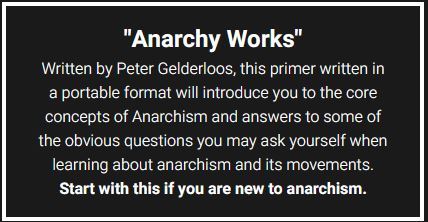
Chapter 3. Economy
How will cities work?
Many people believe that an anarchist society might work in theory, but the modern world contains too many obstacles that prevent such a total liberation. Large cities are chief among these putative stumbling blocks. Industrial capitalist cities are a tangled mess of bureaucracies supposedly only kept running by the authorities. But the maintenance of a large city is not as mystifying as we are led to believe. Some of the biggest cities in the world are largely composed of self-organizing slums stretching for miles. Their quality of life leaves much to be desired, but they do show that cities do not simply collapse in the absence of experts.
Anarchists have some experience maintaining large cities; the solution seems to lie in maintenance workers taking over the organization of the infrastructure for which they are responsible, and neighborhoods forming assemblies so that nearly all other decisions can be made at a local level, where everyone can participate. It is probable that an anarchist revolution will be accompanied by a process of deurbanization as cities shrink to more manageable sizes. Many people will probably return to the land as industrial agriculture decreases or ceases, to be replaced by sustainable agriculture — or “permaculture” — which can support a higher population density in rural areas.
In such a period, it might be necessary to make new social arrangements in a hurry, but it won’t be the first time anarchists have made a town or city from scratch. In May 2003, as envoys of the eight leading world governments prepared for the “G8” summit in Evian, France, the anti-capitalist movement set up a series of connected villages to serve as a foundation for protest and an example of collective, anti-capitalist living; these took the name VAAAG (Village Alternatif, Anticapitalist et AntiGuerres). For the duration of the mobilization, thousands of people lived in these villages, organizing food, housing, childcare, debate forums, media, and legal services, and making decisions communally. The project was widely regarded as a success. The VAAAG also exhibited the dual form of organization suggested above. Specific “neighborhoods,” each with fewer than 200 people, organized around a community kitchen, while village-wide services — “inter-neighborhood collective spaces” such as the legal and medical space — were organized by those involved in providing those services. This experience was replicated during the 2005 mobilizations against the G8 in Scotland, and the 2007 mobilizations in northern Germany, when nearly six thousand people lived together in Camp Reddelich.
These protest villages had precedents in the German anti-nuclear movement of the previous generation. When the state wanted to build a massive nuclear waste storage complex at Gorleben in 1977, local farmers began to protest. In May 1980, five thousand people set up an encampment on the site, building a small city from trees cut for construction and naming their new home The Free Republic of Wendland. They issued their own passports, set up illegal radio shows and printed newspapers, and held common debates to decide how to run the camp and respond to police aggression. People shared food and did away with money in their daily lives. One month later, eight thousand police assaulted the protestors, who had decided to resist nonviolently. They were brutally beaten and cleared out. Subsequent manifestations of the antinuclear movement were less inclined to pacifism.[53]
In England, a yearly festival of travellers and hippies that converged at Stonehenge to mark the summer solstice became a major counter-cultural autonomous zone and an experiment in “collective anarchy.” Beginning in 1972, the Stonehenge Free Festival was a gathering that lasted for the month of June until the solstice. More than a music festival, it was a non-hierarchical space for the creation of music, art, and new relationships, as well as spiritual and psychedelic exploration. It became an essential ritual and social event in England’s growing traveller culture. By 1984, it drew 30,000 participants who created a self-organized village for the month. In the words of one participant, it was “Anarchy. And it worked.”[54] The Thatcher regime saw it as a threat; in 1985 they banned the 14th annual Stonehenge Free Festival, brutally attacking the several hundred people who came to set it up in an assault known as the Battle of the Beanfield.
These examples of impromptu camps are not as marginal as they might seem at first. Hundreds of millions of people throughout the world live in informally organized cities, sometimes called shantytowns or favelas, which are self-organizing, self-created, and self-sustaining. The social issues posed by these shantytowns are very complex. Millions of farmers are forced off their land yearly and have to move to the cities, where the peripheral shantytowns are the only place they can afford to settle; but a great many people also move to the city voluntarily to escape the more culturally rigid rural areas and build a new life. Many shantytowns are plagued by health problems caused by poor access to clean water, healthcare, and nutrition. However, many of these problems are peculiar to capitalism rather than the structure of the shantytowns, as the inhabitants are often ingenious in providing for themselves in spite of artificially limited resources.
Privatized electricity and water are generally too expensive, and even where these utilities are public the authorities often refuse to provide access to informal settlements. Shanty dwellers get around this problem by constructing their own wells and pirating electricity. Medical care is highly professionalized in capitalist societies and distributed in exchange for money rather than on the basis of need; consequently, there are rarely fully trained doctors in the shantytowns. But the folk medicine and healers that are present are often available on a basis of mutual aid. Access to food is also artificially limited, because small-scale horticulture for local consumption has been replaced by large-scale production of cash crops, depriving people throughout the Global South of diverse and affordable sources of local food. This problem is exacerbated in famine areas, because food aid from the US, in line with military and economic strategies, consists of imports rather than subsidies for local production. But within the settlements, available food is frequently shared rather than traded. An anthropologist estimated that in one informal settlement in Ghana people gave away almost one third of all their resources. This makes perfect sense. Police rarely have control of shantytowns, and some armed force is required to uphold an unequal distribution of resources. In other words, those who hoard resources are likely to be robbed. With few resources, little security, and no guarantees of property rights, people can live better by giving away a large portion of whatever resources they come across. Gift-giving increases their social wealth: friendships and other relationships that create a safety network which cannot be stolen.
In addition to mutual aid, the anarchist objectives of decentralization, voluntary association, hands-on production rather than professionalization of skills and services, and direct democracy are guiding principles in many shantytowns. It is also important to note that, in an era of growing environmental devastation, shantytown dwellers subside on just a fraction of a percent of the resources consumed by suburbanites and formal city dwellers. Some may even have a negative ecological footprint, in that they recycle more waste than they generate.[55] In a world without capitalism, informal settlements would have the potential to be much healthier places. Even today, they disprove the capitalist myths that cities can only be held together by experts and central organization, and that people can only live at today’s population levels by continuing to surrender our lives to the control of authorities.
One inspiring example of an informal city is El Alto, Bolivia. El Alto sits on the Altiplano, the plateau overlooking La Paz, the capital. A few decades ago El Alto was just a small town, but as global economic changes caused the shutting down of mines and small farms, huge numbers of people came here. Unable to reside in La Paz, they built settlements up on the plateau, changing the town into a major urban area with 850,000 residents. Seventy percent of the people who have jobs here make their living through family businesses in an informal economy. Land use is unregulated, and the state provides little or no infrastructure: most neighborhoods do not have paved roads, garbage removal services, or indoor plumbing, 75% of the population lacks basic health care, and 40% are illiterate.[56] Faced with this situation, the residents of the informal city took their self-organization to the next step, by creating neighborhood councils, or juntas. The first juntas in El Alto go back to the ‘50s. In 1979 these juntas started to coordinate through a new organization, the Federation of Neighborhood Councils, FEJUVE. Now there are nearly 600 juntas in El Alto. The juntas allow neighbors to pool resources to create and maintain necessary infrastructure, like schools, parks, and basic utilities. They also mediate disputes and levy sanctions in cases of conflict and social harm. The federation, FEJUVE, pools the resources of the juntas to coordinate protests and blockades and constitute the slum dwellers as a social force. In just the first five years of the new millennium, FEJUVE took a lead role in establishing a public university in El Alto, blocking new municipal taxes, and deprivatizing the water services. FEJUVE also was instrumental in the popular movement that forced the government to nationalize the natural gas resources.
Each junta typically contains at least 200 people and meets every month, making general decisions through public discussion and consensus. They also elect a committee which meets more frequently and has an administrative role. Political party leaders, merchants, real estate speculators, and those who collaborated with the dictatorship are not allowed to be committee delegates. More men than women sit on these committees; however a greater percentage of women take on leadership roles in FEJUVE than in other Bolivian popular organizations.
Parallel to the organization in neighborhood councils is the organization of infrastructure and economic activity in unions or syndicates. The street vendors and transportation workers, for example, self-organize in their own base unions.
Both the neighborhood councils and their counterparts in the informal economy are patterned after the traditional communitarian organization of rural indigenous communities (ayllu) in terms of territoriality, structure and organizational principles. They also reflect the traditions of radical miners’ unions, which for decades led Bolivia’s militant labor movement. Fusing these experiences, El Alto’s migrants have reproduced, transplanted and adapted their communities of origin to facilitate survival in a hostile urban environment. [...]Through the neighborhood juntas, El Alto has developed as a self-constructed city run by a network of micro-governments [57] independent of the state. In Raúl Zibechi’s view, the autonomous organization of labor in the informal sector, based on productivity and family ties instead of the hierarchical boss-worker relationship, reinforces this sense of empowerment: Citizens can self-manage and control their own environment [58]
Horizontal networks “without traditional leadership” also play a major role complementary to these formal structures in both the organization of daily life and the coordination of protest, blockades, and struggle against the state.
Now that Bolivia has an indigenous president and progressive government led by MAS, the Movement Towards Socialism, FEJUVE faces the danger of incorporation and recuperation that typically neutralizes horizontal movements without explicitly anti-state goals and means. However, while supporting Evo Morales’ reversals of neoliberal policy, as of this writing FEJUVE remains critical of MAS and the government, and it remains to be seen to what extent they will be recuperated.
In South Africa, there are many other examples of informal urban settlements that organizes themselves to create a better life and struggle against capitalism. Specific movements of shack dwellers in South Africa are often born out of moments of violent resistance that take on an extended life as people who met in the streets to stop an eviction or a water shut-off continue to meet in order to create structures for home care for the sick, fire watch, security patrols, burial services, education, gardens, sewing collectives, and food distribution. This was the case with the movement Abahlali base Mjondolo, which arose in 2005 out of a road blockade to stop the eviction of the settlement to make way for development in preparation for the 2010 World Cup.
The Symphony Way settlement of Capetown is a squatted community of 127 families who had been forcibly evicted from their previous home by the government, which is trying to meet its 2020 target under the Millennium Development Goals to eradicate all slums. The government relocated some of the evictees in a tent camp surrounded by armed guards and razor wire, and the rest in the Transit Relocation Areas, described by one resident as “a lost place in hell” with high crime and frequent rape of children.[59]
Refusing to negotiate with the highly distrusted political parties or to live in either of the officially provided hell holes, the Symphony Way families decided to illegally occupy an area along a road to set up their community. They organize their community with mass assemblies in which everyone participates, as well as a high degree of individual initiative. For example, Raise, a nurse who lives in Symphony Way, volunteers as a teacher within the community center, helps organize a girl’s netball team, a boy’s soccer team, a drum band, a children’s daycamp during holidays, and assists in childbirth. Children are very important within the settlement, and they have their own committee to discuss the problems they are confronted with. “In the committee we solve our everyday problems, when children fight or something. We come together and talk. There are children from other settlements, not only from this road,” explains one member of the committee. The community is multiracial and multireligious, including Rastafarians, Muslims, and Christians, who work together to foster a culture of respect among the different groups. The settlement has a night-watch to discourage antisocial crime and put out unattended fires. The residents told a visiting Russian anarchist that they felt much safer in their community than they would in one of the camps offered by the government, where crime is rampant, because at Symphony Way the community worked together to protect itself. “When someone is in trouble everyone is here,” explained Raise. The sense of community is one reason why the squatters do not want to move to a government camp, despite the threat of police violence, and even though in the tent camp the government provides food and water for free. “The community is strong and we made it strong, living and working together, but we didn’t know each other when we first came here. This year and a half made us all a big family.”
There are thousands of examples of people creating cities, living at high population density, and meeting their basic needs with scant resources, with mutual aid and direct action. But what about the bigger picture? How would densely populated cities feed themselves without subjugating or exploiting the surrounding countryside? It may be that the subjugation of rural areas by cities played a role in the emergence of the state thousands of years ago. But cities do not have to be as unsustainable as they are now. The 19th century anarchist Peter Kropotkin wrote about a phenomenon that suggested interesting possibilities for anarchist cities. Urban gardeners in and immediately around Paris supplied most of the city’s vegetables via intensive agriculture supported by plentiful manure from the city, as well as industrial products, such as glass for greenhouses, that was too costly for farmers in rural areas. These suburban gardeners lived close enough to the city that they could come in every week to sell their produce at market. The spontaneous development of this system of gardening was one of Kropotkin’s inspirations in writing about anarchist cities.
In Cuba, centralized industrial agriculture collapsed after the fall of the Soviet Bloc, which had been Cuba’s main supplier of petroleum and machinery. The subsequent tightening of the US embargo only exacerbated the situation. The average Cuban lost 20 pounds. Quickly, much of the country shifted to small-scale intensive urban agriculture. As of 2005, half of the fresh produce consumed by the 2 million residents of Havana was produced by about 22,000 urban gardeners within the city itself.[60] The Parisian example chronicled by Kropotkin shows that such shifts can also occur without state guidance.
#anti colonialism#anarchism#daily posts#communism#anti capitalist#anti capitalism#late stage capitalism#anarchy#anarchists#libraries#leftism#social issues#economy#economics#climate change#anarchy works
3 notes
·
View notes
Note
Please elaborate about the border patrol incident
okay so, the border patrol incident is not really that dramatic, but it is very funny to me. when i was a young 20-something, one summer a friend and i decided to go on a month-long roadtrip across the continent and back. we had a lease on an apartment that didn't start until september, shitty little service industry jobs that didn't care if we disappeared for four weeks, and absolutely no standards for like, sleeping conditions or whatever. we got a hotel or motel room every 4-5 days to shower and stuff but mostly we were living out of my 2001 toyota camry, which ran just fine but was not in the best shape aesthetically due to being pretty old and also due to young me having sub-par depth perception and occasionally backing it ungently into things. also, because we were between apartments, the vast majority of our earthly belongings were packed into the backseat and trunk of this car.
the route of the trip was pretty meandering, but some stretches of it were based on the summer tour dates of bands we liked -- one of my favorites things to experience in a new city is its small/medium music venues, so this was a great excuse for doing that. anyway, we'd started the trip by driving north to montreal and then cutting west, but instead of going over the great lakes through western ontario we headed south, crossed back into the us at sarnia and went up through michigan's upper peninsula, wisconsin, minnesota. the night before we crossed the border again, we parked the car in the massive parking lot of the walmart supercenter in bemidji to sleep, which i remember distinctly because of the paul bunyan and babe the blue ox statues looming suddenly upon us in the middle of the night as we drove into town. that's not important to the story, but i am setting the scene here, which is that leading up to this encounter my traveling companion and i had just spent several days driving through a lot of deeply rural lake country with very little human contact except each other. the plan that day was to hit a concert in winnipeg and so we awoke with the sun, availed ourselves of the bemidji walmart supercenter facilities, and headed north.
the border crossing our google maps directions took us to was the one on route 59, which is a very small and not very busy crossing. i think the border guards were quite bored. in retrospect i can see how a couple of young women in this old, stuffed-to-the-gills car with virginia plates seemed pretty strange, but also in retrospect i still maintain they didn't have to be dicks about it. they checked our passports, asked where we were from and where we were headed -- to a concert in winnipeg -- and then decided that they needed to unpack the entire car to make sure we weren't carrying anything illegal, because, they said, groupies like to bring drugs to concerts.
please recall that we had so much stuff in this car. clothes and books and food and small furniture. the tetris of packing it was both an art and a science. i was NOT happy to have it dismantled by these border men. at one point they were like, ohhh see ALCOHOL and i was like, yeah, it's in the trunk so obviously no one is getting at it while driving so who cares?? and also it's not enough to have to declare so truly who cares. by the end of this process our cache of earthly belongings was scattered around the car in the road on the canadian border, and they begrudgingly allowed us into the country, but a single other vehicle had arrived at the crossing so they told us we needed to hurry up and get out of the way.
now i was already stewing in anger over a) the characterization of us as female fans traveling to a concert as "groupies" and b) the characterization of groupies as ~obviously~ carrying drugs. no disrespect to actual groupies or to drug users, live ur lives!! but we were neither if those things in that moment and i found the generalizations very gross, so i snapped at the border guards that the car takes a lot longer to re-pack then unpack and also maybe they should consider being less sexist. they did not like this very much. i also do not think they liked my lecture about their assumptions about female music fans, but imo they deserved it. afterward when we were finally driving into the grand prairies of manitoba, my friend was like, becky...... maybe in the future consider not picking fights with the border guards considering they get to decide if we cross the border. and i was like. well. we got in didn't we lmao.
in conclusion we did make it to the show in winnipeg, where we failed to read the fine print on the parking signs and also i sliced my foot open on something in the mosh pit, turning me into a person who now will tell literally anyone at any given opportunity, "yeah, i've been to winnipeg, and all i got was a parking ticket and a flesh wound."
#ask#i would like to say my decision-making skills have improved since then but#well#it's up for debate#anyway i am still in the mountains but thank u to the people who have sent kissing prompts i am excited to write them
11 notes
·
View notes
Text
Digital Marketing Agency for Gym and Fitness
#Digital Marketing Agency for Gym and Fitness#digital marketing for travel industry#lead generator#digitalmarketing#seotechexperts#seo services#digital marketing#Gym and Fitness
0 notes
Text
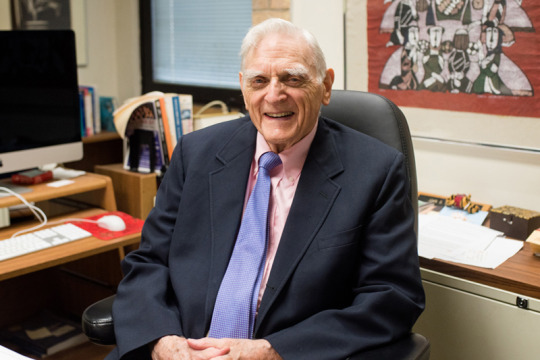
Alfred Nobel stipulated that his annual prizes be awarded to those who “have conferred the greatest benefit to humankind”. Few scientific advances have had a greater impact on our lives than that made by the American materials chemist John Goodenough, a chemistry Nobel laureate in 2019 for his role in inventing the rechargeable lithium battery.
If you are reading this on a handheld device, it will almost certainly have a lithium battery inside. These power packs have been instrumental to the advent of electric cars, and their ability to store power such as that generated by ephemeral renewable sources could aid the transition away from a fossil-fuel energy economy.
For year after year Goodenough, who has died aged 100, featured in the list of Nobel predictions. Only his remarkable longevity saved the Swedish committee from an embarrassing injustice – he is the oldest person to have been awarded a Nobel. He seemed phlegmatic about being repeatedly overlooked, even though he did not enjoy any financial reward for his breakthrough either: in the 1980s he was not encouraged to take out a patent on the battery breakthrough he made at Oxford University. He was glad enough still to be able to do research, which he sustained almost until the very end of his life.
He left Oxford in 1986 for the University of Texas at Austin to escape compulsory retirement at 65, convinced – rightly – that he had a lot more still to offer. “Why would anyone retire and simply wait to die?” he asked. His vitality and enjoyment in the lab well into his 90s, punctuated by his loud and high-pitched laugh, was a constant cause of amazement.
One would hardly have guessed from that demeanour how unhappy his childhood had been, as the second of three children of extremely distant parents in what he called “a disaster” of a marriage. He was born in the city of Jena, Germany, to Helen (nee Lewis) and Erwin Goodenough.
They were both Americans who were living in Oxford – Erwin was studying for a DPhil at the university and, according to his son, “enjoyed the culture of the Weimar Republic; he spent much of his long summer vacations in Germany as well as in Rome”.
John was taken as a baby to the US, where his father became a professor of religious history at Yale University. John grew up mostly in a boarding school in Massachusetts, from where, despite being an undiagnosed dyslexic, he won a place to study mathematics at Yale. After wartime military service as a meteorologist, he gained a doctorate in physics at the University of Chicago and in 1952 began research on magnetic materials for information storage at the Massachusetts Institute of Technology.
That work qualified him to switch to inorganic materials chemistry when in 1976 he moved to Oxford. At that time, interest was growing in electric vehicles, which were being held back by the lack of suitable batteries.
The potential benefits of electric cars as quieter and less polluting than those using the petrol-fired internal combustion engine had been recognised since their inception. But the lead-acid batteries used as starter batteries and the power source for vehicle electronics were utterly unequal to the task of supplying the motive power: they were too heavy and offered too little power.
The dream of battery-powered cars was resurrected in the 60s, but it was only a decade later, with the Opec oil crisis in full swing, that the industry took them seriously.
The key was to find the right materials for the battery electrodes. Lithium metal looked attractive because it is lightweight and capable of delivering high voltages. The idea was that lithium at the positive electrode would provide electrically charged ions that travel to the negative electrode, where they could be trapped between the layers of atoms in materials called intercalators.
The British chemist Stanley Whittingham, one of Goodenough’s co-laureates, working at the Exxon laboratories in New Jersey, found a suitable intercalator called titanium disulfide in 1976. Four years later, Goodenough in Oxford identified the material – a form of cobalt oxide – that became the industry standard, offering a higher voltage and greater power density.
Early lithium batteries had a tendency to catch fire because of the high chemical reactivity of pure lithium. But the third 2019 laureate, the Japanese researcher Akira Yoshino, of the Asahi Kasei Corporation in Tokyo, replaced lithium electrodes with graphite-like carbon made from petroleum coke, which also intercalates lithium so that the ions merely shuttle back and forth between the two sets of layers, making them easily rechargeable.
The lithium-ion battery was commercialised in 1991 by the Sony Corporation, and now commands an estimated $92bn market. Without it there could have been none of today’s handheld electronics – laptops, smartphones, tablets. Elon Musk’s Tesla electric cars depend on them.
There is still room for improvement and Goodenough never stopped seeking it. In the past decade he was working, among other things, on making batteries that operate at low temperatures, suitable for powering cars in the winter.
He was also seeking a new, safer way to reinstate pure lithium electrodes, which could give lithium batteries more energy capacity. At the same time, he expressed concerns about the international tensions that might arise over the limited global supplies of lithium.
Goodenough maintained a strong Christian belief throughout his life, seeing no conflict with his scientific work. “The scientist is trying to do something for society and for his fellow man,” he said. “In that sense why should there be a conflict?” During his 90s he cared for his wife, Irene (nee Wiseman), who had Alzheimer’s disease. They had married in 1951; she died in 2016.
“I’d like to get all the gas emissions off the highways of the world”, Goodenough said in 2018. “I’m hoping to see it before I die.” It was always an ambitious aspiration, even for someone with his staying power. But if it happens one day, Goodenough will have played a central part in that.
🔔 John Bannister Goodenough, materials scientist, born 25 July 1922; died 25 June 2023
Daily inspiration. Discover more photos at http://justforbooks.tumblr.com
17 notes
·
View notes
Text
"I left out the full truth to get my climate change paper published,"
Science is not independent
The climate scientist Patrick T. Brown admits that he dramatized and left out details in order for a renowned scientific journal to publish his work. Scientists in general and climate researchers in particular are heavily dependent on funding. Therefore, most people tend to shout extra loudly to justify their own job. Yet the vast majority of people today are incredibly naive and, like a story from a children's book, believe that scientists are completely independent actors working for the good of humanity without any selfish interests. Outside academia, science is a tough business, a service industry: Others pay you to provide them with pleasant data.
But even in the university sector you have to maintain very good contacts in order to become part of a research team or lead one yourself after many years of brown-nosing. I once did an internship as a laboratory assistant in the biochemistry department at a research institute for a while and experienced my first disappointment in this career. The doctor of biochemistry who supervised me at the time criticized the fact that other research groups went to great lengths to justify their work. For example, the life cycle of an African fish served as a justification for operating under the heading of aging research. The leading biologist in this group has simply reinterpreted a natural process as accelerated aging that occurs during dry periods in order to secure a place at the institute.
A bit off topic
Basically, research is quite boring in most cases. The doctor who supervised me during this time had been studying the same protein “p51” for 20 years, and before that the enzyme “streptokinase” for 15 years. WOW! That sounds really exciting! :D
So, looking back, it didn't surprise me when, during my lunch break, another older biochemist sitting next to me raved about simply being a truck driver: no struggling with idiosyncratic academics, just looking out the window. And probably less boring, because at least you're traveling around a lot instead of just hanging out in a dark laboratory. It must be said that when this researcher was studying in the GDR, the courses were not as overcrowded as they are today, and ultimately more suitable people studied certain things, not least since there was a clear career ladder: school, vocational training, military service and for some study. This excludes everyone who is just studying something to pass the time, as is the norm in Europe today, with lecture halls hopelessly overcrowded. It is thus all the more astonishing that someone from this time still came to certain insights that you would not expect.
The fact that I dropped out of my chemistry studies a few years later and went into the IT sector instead was the best decision of my life. My only regret is that I didn't have it sooner, but on the other hand, this life experience is also helpful. But if I had continued studying chemistry, I wouldn't have finished it even at 33, because after a bachelor's and master's degree, a fucking doctorate would be necessary too in order to have any job opportunities on the market, since over 80% of all chemists do a pointless doctorate . (And don't forget the fake pandemic back then, which would have delayed my master's degree in chemistry or doctorate by at least 2 years; so when I think about it, it was an incredibly wise decision to leave the university a few years earlier before all this shit started!)
In the IT sector it is completely different, where a good, solid bachelor's degree is sufficient, or in Germany professional training (which is strictly regulated like all trained professional profiles and accompanied by vocational schools and monitored by the Chamber of Industry and Commerce). But the appeal of IT for me is also that you basically only need a PC with internet: you don't have to enter a laboratory under protective regulations or even drive somewhere. It's less stressful as long as you don't work for a shitty company where most of the work falls on you. But it's not for everyone either, it's a job for couch potatoes. :D
But one thing that I really appreciate about computer science compared to the natural sciences is that you don't have to worry about dogmas or beliefs. The end result must be software that does something useful. This is much more practical than being a lab assistant doing boring analyzes all day long; or being a researcher who deals with boring detail questions.
2 notes
·
View notes
Text
After a couple find a woman to buy eggs from for up to $250,000 they have to “find a surrogate, the uterus-bearing person who will carry your baby.” Meaning a Woman to build a baby in her womb for 9 months then give birth to it.
By NICK WOLNY
MAY 20 2023 10:04 AM EST
Let’s have a baby together. It’ll only set you back $250,000.
To become a gay dad with a biological child, you’ll first need some eggs (human ones). You can buy some from an egg bank or try to find a donor who will cycle just for you. If doing the latter, it’s good to have contracts, so you’ll need a lawyer too.
Then you need to get your eggs to a fertility clinic. If you have a donor, you’ll be paying for their travel and appointments. If you’ve got the eggs, a freezer truck transportation service will do. Embryologists at the clinic do their thing with the eggs and your sperm, and voilà — you have embryos on ice. If embryologists sound expensive, it’s because they are.
We’re done with the “less hard” part. Now you need to find a surrogate, the uterus-bearing person who will carry your baby. You’ll either pay a surrogacy agency, which can be pricey, or find a surrogate of your own, which “sounds hard because it is,” says Janene Oleaga, attorney and founder of Oleaga Law, a family formation law firm. “Then there’s the actual embryo transfer, which may or may not be covered by insurance. You’ve also been paying this whole time to keep the embryos cryogenically preserved,” Oleaga says.
Feeling the cash crunch yet? There’s another cost to consider. The stigma against gay parenthood runs deeper than rhetoric alone. It’s woven into the very fabric of our health care system.
As LGBTQ+ acceptance makes hard-fought progress, today’s young people are coming out earlier than previous generations. In a 2018 survey conducted by the Family Planning Council, respondents over the age of 60 said they came out at an average age of 37; for respondents in their 30s, the average age was 21, and for respondents ages 18 to 24, the average age was 17.
When Obergefell v. Hodges granted federal marriage equality protections in 2015, LGBTQ+ interest in family planning spiked, with solutions like assisted reproductive technology (ART), foster parenthood, and private adoption leading the way. Nearly half of LGBTQ+ millennials are actively planning to grow their families, a difference of just 7 percentage points from non-LGBTQ+ millennials, and a marked difference from previous generations.
If queer intended parents (IPs) take the ART route, financial challenges loom. The average cost of in vitro fertilization (IVF) hovers around $12,400 per cycle, according to the American Society for Reproductive Medicine. But the chances of success are less than 50 percent, according to ART data from the CDC, adding considerably to the financial pressure. Subsequently, an entire boutique industry has emerged to help intended parents navigate the medical, legal, and emotional terrain of the process.
“To be very frank and honest with you, a lot of this is a mega, mega business,” says Harout Cracchiolo, who together with his husband became a first-time father last year. “We went with a friend who donated her eggs and paid for all her treatments. Then we went with a family member who ended up carrying the baby for us and got a separate surrogacy insurance for her. We still had to pay all the hospital bills, anesthesia, and doctor’s visits [out of pocket], because insurance wouldn’t cover it. We ended up at around $175,000.”
(In other words they had a baby by taking eggs from one woman then exposing another women to the dangers of a pregnancy with heightened risks just to create a baby that neither the egg donor or the woman who gave birth will feel a connection to and will have a harder time in court if they sue for custody or visitation)
Cracchiolo says he and his husband were lucky, “because we did our IVF and got pregnant the first time.” He partially attributed this success to the care he and his husband received from their chosen fertility center, and he called some agencies “a scam.”
“One quote included a $60,000 agency fee,” Cracchiolo says. “Then it’s about another 20 or 30 grand for the egg donor, another 70 or 80 grand for the surrogate, and all the attorney’s fees.” Cracchiolo also says he and his husband calculated another quote’s projected total cost to be over $250,000, with the agency wanting most of that money in escrow upfront.
Family planning professionals said the $60,000 agency fee figure sounded high and noted that every industry has its bad actors. For many intended parents, finding and working with a good agency to mitigate the risks of surrogacy will be worth the investment. “There are a number of reputable agencies protecting both intended parents and surrogates alike,” Oleaga says in a follow-up email. “An ethical, knowledgeable agency provides valuable guidance and support throughout the surrogacy journey.”
Oleaga adds that many lawyers offer to review agency agreements with both intended parents and surrogates to ensure individuals understand what they are agreeing to, along with what services the agency will and will not provide.
Nevertheless, for gay male couples, the fertility financial benefits that come with health insurance are often stunted, since they may only apply when policy holders themselves are the ones who are pregnant. “The majority of gay men,” says Oleaga, “should expect a six-figure bill.”
(So it’s gay males and egg donors and uterus bearing persons)

The unpredictable costs of fertility have led some intended parents to seek out agencies whose financial safeguards help keep their family planning hopes alive, says Taylor Frey, who with his husband Kyle Dean Massey opened Elevate, an egg donation and surrogacy agency, after their own decade-long fatherhood journey.
“When Kyle and I went through the process, we were both working in Broadway shows, and we started a savings account to create embryos with an egg donor,” Frey says. “I was 25 at the time. We created embryos, then put them on ice for eight years so we could replenish funds.”
Frey and Massey say they founded Elevate to innovate on industry setback and cancellation policies. “If you do not end up with what you need to transfer to a surrogate, your recycle fees are on us,” says Frey, referring to fertility fees incurred when eggs turn out to be unviable.
“The reason why [surrogacy] is so expensive is that, from deciding you want to be a parent to having a baby, hundreds of people will touch your case,” Massey says. “All the attorneys, and psychologists, and counselors, and lab technicians, and nurses, and physicians, and monitoring clinics, and labs — it’s a lot of people.”
Oleaga agreed with the idea of meeting with several prospective fertility service providers as a best practice. “I always advise intended parents and potential surrogates to meet with multiple agencies and review their agency agreements before signing on,” she says.
For female same-sex couples, the dynamics are different, albeit no less demeaning.
“We knew we wanted to have kids. My only stipulation was that we be married first because we’re gay,” says Samantha Davis, who with her wife Leni had their son via intrauterine insemination (IUI) on their second attempt in 2019. “I just didn’t want the government to feel like we weren’t both equally the parent.”
If heterosexual couples have unexplained infertility, they need to have been trying to conceive for at least a year (or six months if over the age of 35) before a doctor will make the diagnosis official, a declaration that unlocks health insurance benefits for some fertility services. But for same-sex couples, the waiting period is waived. “Because we’re gay, I wanted to make sure that I was automatically considered infertile [from the start] so that the insurance would cover some of the stuff we would be going through,” Samantha says.
The couple’s infertile status unlocked an allowance of $16,000. “That’s not per child, or per year,” Leni says. “That’s for life.” The Davises’ expenses included storage for sperm and paying to have embryos created and tested, all of which quickly burned through the stipend. They also say they had to pay out of pocket for psychiatric evaluations and blood work.
“The first time, we weren’t in a great financial place,” Samantha says. “We were scraping every time we needed to pay for something.” Samantha touched her belly. She’s pregnant again, this time through IVF.
“After our son, I really wanted to have a girl,” she says. The couple decided to do IVF to produce a female embryo, but after two attempts, the only remaining healthy embryos were males. “We could have tried again to see if we could get that girl, but financially it wasn’t feasible.”
(And there it is once enough money is spent it’s not just about having a baby, it’s about having a certain type of baby)
The path to biological parenthood shouldn’t be this expensive for anyone. For LGBTQ+ people, however, the journey remains especially taxing as we navigate systems ill-suited to our family planning interests.
“A lot of LGBTQ+ people don’t have children, so it’s not such a big movement,” Cracchiolo notes. “But it needs to be. You want to feel included. You’re having a baby — you don’t want to feel strange when you go to the hospital.”
Horror stories aside, the parents agree their journey was worth every step.

“It’s the coolest thing to wake up and know that every day you’re working towards making this child’s life something you didn’t have,” Cracchiolo says. “It’s just the best thing ever.”
The Davises echo this sentiment. “It’s rewarding in so many ways,” Samantha says. “I think I’ve learned so much about myself, my upbringing, things that I hope to do differently.”
Queer people deserve to become biological parents regardless of socioeconomic status. But reform is needed to make LGBTQ+ parenthood more financially accessible.
(No one is entitled to biological offspring. And how do they reform it to make it “financially accessible” without fairly compensating the women going through the egg donation process or the birth mother who will be carrying a pregnancy with a greater risk of complications?)
In the interim, anticipating the future cost of parenthood might influence how you spend and save your money today.
Oh, and if people start to give you shit for tightening the budget to fund your legacy — “Fuck ‘em,” Samantha says. “Don’t worry about what anyone says. Find what works for you and your family.”
Leni laughs. “You can quote her on that.”
Nick Wolny is a journalist, speaker, and entrepreneur. He writes about the intersection of LGBTQ+ life and personal finance, and has previously contributed to CNET, Entrepreneur, and Business Insider. Join his newsletter at NickWolny.com.
This article is part of the Out May/June issue, available on newsstands May 30. Support queer media and subscribe -- or download the issue through Amazon, Kindle, Nook, or Apple News.
I wonder how many women have received requests to be surrogates for family members and the rest of the family piled on over the hope of more grandkids for the family? Women need to learn the side effects and risks associated with egg donation and surrogacy so they can back up their “NO”.
#Anti surrogacy sunday#Babies are not commodities#No one is entitled to biological offspring#Anti exploiting women#Maybe parents with this money should consider adoption?#Anti creating children with no mother to check in on them
14 notes
·
View notes
Text
Hospitality executive, George Dfouni discusses the pros and cons the travel industry faces during a presidential year.
The travel industry experiences a unique set of challenges and opportunities during a presidential election year. Uncertainty often surrounds economic policies, international relations, and global stability, influencing both consumer behavior and industry dynamics.
One primary factor affecting the travel sector is the economic policy proposed by presidential candidates. Debates over taxation, government spending, and overall economic direction can create an atmosphere of financial uncertainty. This uncertainty tends to make consumers more cautious about discretionary spending, including travel expenditures.
Furthermore, George Dfouni explains, international relations play a pivotal role in the travel industry. Political rhetoric and policy proposals related to trade agreements, immigration, and diplomatic relations can impact the ease and attractiveness of international travel. Changes in these areas may result in shifts in tourism patterns, affecting destinations that rely heavily on foreign visitors.
Security concerns also come into play during election years. Political campaigns often focus on addressing perceived threats, and discussions around national security can influence travel perceptions. Increased security measures or geopolitical tensions may lead to altered travel plans, with individuals opting for destinations perceived as safer or avoiding regions with heightened risks.
Government regulations and policies related to the travel industry can be subject to change during a presidential election year. Candidates may propose alterations to visa processes, transportation regulations, or public infrastructure investments, all of which can have direct consequences for the travel sector.
The state of the economy, particularly employment rates and consumer confidence, is another critical factor. A presidential election year can be marked by intense debates on economic policies, and the outcome of the election may shape the overall economic landscape. Strong economies generally contribute to increased travel as consumers feel more financially secure and willing to spend on leisure activities.
George Dfouni states: “It's worth noting that the travel industry is adaptable. While uncertainty may initially create a cautious atmosphere, once the election results are clear, businesses often adjust to the new political landscape. Clarity on economic policies, international relations, and security measures provides a more stable foundation for both industry professionals and travelers.”
Presidential elections also offer opportunities for the travel industry. Campaign events, rallies, and conventions attract large crowds, creating a surge in demand for accommodations, transportation, and local services in host cities. This influx of visitors can boost the economies of these areas and highlight the significance of the travel sector in supporting various local businesses.
In conclusion, George Dfouni adds: “The travel industry during a presidential election year is inevitably influenced by the uncertainties and debates surrounding economic policies, international relations, security concerns, and government regulations. While challenges arise, the industry also seizes opportunities presented by campaign-related events. Adaptability is key for both businesses and travelers as they navigate the evolving landscape shaped by the outcomes of the elections.”

#business#strategy#george dfouni#georgedfouni#marketing#design#history#health & fitness#music#politics#us elections
3 notes
·
View notes
Text
Meghan, The Duchess of Sussex

Meghan, The Duchess of Sussex is a feminist, champion of human rights and gender equity, and global role model. Her lifelong advocacy for women and girls remains a constant thread she weaves through both humanitarian and business ventures. She is noted as one of the most powerful and influential women in the world, topping lists such as TIME Magazine’s Most Influential People, The Financial Times’ 25 Most Influential Women, Variety Power of Women, and British Vogue’s Vogue 25.
She and her husband, Prince Harry have also been the recipients of the NAACP President’s Award as well as the Robert F. Kennedy Ripple of Hope Award. Meghan’s global impact, and strong stance on resilience, equality, and compassion through action, have made her one of the most iconic public figures of this generation.
Born and raised in Southern California, Meghan attended Los Angeles based all-girls Catholic School, Immaculate Heart, which she continues to support as an alumna, before moving to Chicago to attend the prestigious Northwestern University. While there, she double majored in Theater and International Relations, and went on to intern at the US Embassy in Buenos Aires, Argentina, as well as to study abroad in Madrid, Spain. After graduation, Meghan turned her focus to the entertainment industry, landing her big break as a lead actor on the hit series, ‘Suits’ which she starred in for seven seasons. During her time off between filming, Meghan travelled to Rwanda, India, and across the globe working on humanitarian missions, and serving in key roles such as: UN Women’s Advocate for Women’s Political Participation and Leadership, a World Vision Global Ambassador, and a leading Counsellor to One Young World, where she inspired youth and women around the world through her passionate advocacy and hands-on approach to being of service. She also travelled to support the military community on a USO Tour, visiting six military bases in seven days including Bagram, Afghanistan.
In 2018, Meghan married Prince Harry, becoming The Duchess of Sussex.
An accomplished writer, she has contributed pieces to publications in the UK, US, and Ireland, and parlayed that skill into the creation of the successful lifestyle website, ‘The Tig’, where her thoughtful and inspiring op-eds cultivated a global fanbase. The Duchess of Sussex was the first guest editor in the history of British Vogue for their July Issue in 2019, which was the fastest selling copy in the history of the publication.
She and Prince Harry founded The Archewell Foundation in 2020 to support communities in need at a micro and macro level, in both moments of crisis as well as for long term aid. At The Archewell Foundation, they hold the value that charitable work should not simply be ‘a handout, but rather a hand held’, a phrase which Meghan first coined when supporting UK charity Smart Works, of which she is patron, that uplifts and prepares underserved women to enter the workforce. Meghan and her husband also founded and oversee production company, Archewell Productions and podcasting arm, Archewell Audio.
In 2022, Meghan launched ‘Archetypes’, a record-breaking podcast exploring the labels that try to hold women back; ‘Archetypes’ debuted at Number 1 in The US, UK, Australia, Ireland, and New Zealand, and topped the charts as the Number 1 podcast in 47 countries, demonstrating her unparalleled global reach. After its first season, Archetypes was awarded The People’s Choice Award in the podcast category.
She is a NY Times Best Selling author, publishing her highly celebrated children’s book, ‘The Bench’, and “Together: Our Community Kitchen” a publication she spearheaded with the women of the Hubb Community Kitchen in the UK, who were displaced after the tragic Grenfell Fire. True to her character, The Duchess of Sussex mobilized to turn pain into purpose, working alongside this dynamic group of women to help them heal, grow, and develop their own business enterprises in the face of adversity. In addition to topping the NY Times Bestsellers list, “Together,” also debuted as number one on the UK’s Sunday Booklist, with proceeds going to the Kitchen.
Meghan’s influence in fashion has been coined “The Meghan Effect” with items selling out within hours of her wearing them. Her ‘effect’ has transcended fashion, shifting cultural conversations as seen with her op-ed for the NY Times “The Losses We Share.” The piece detailed a heartbreaking personal loss which spiked the conversation surrounding miscarriage to the highest it had been spoken of in over two decades at the time of publishing.
Meghan is a passionate advocate for mental health and family care, the holistic support of women and children’s rights, and the immeasurable value of one’s self worth. Her core belief that representation matters, and her connection to community through the lens of learning, healing, and inspiring have helped define her as a cultural catalyst for positive change.
Meghan resides in California with her husband and their children Prince Archie Harrison and Princess Lilibet Diana, and their three dogs.
15 notes
·
View notes

